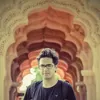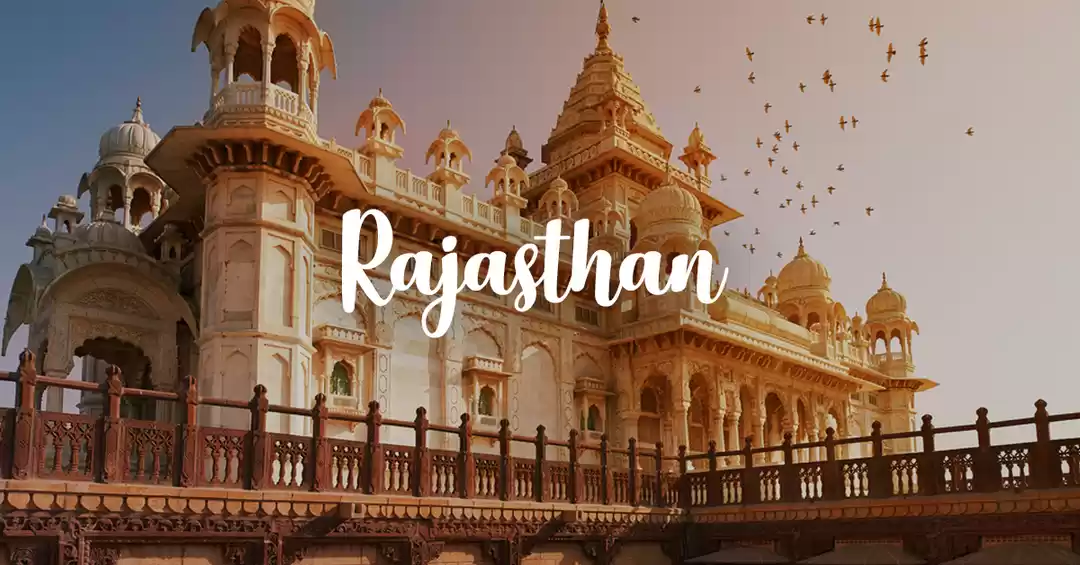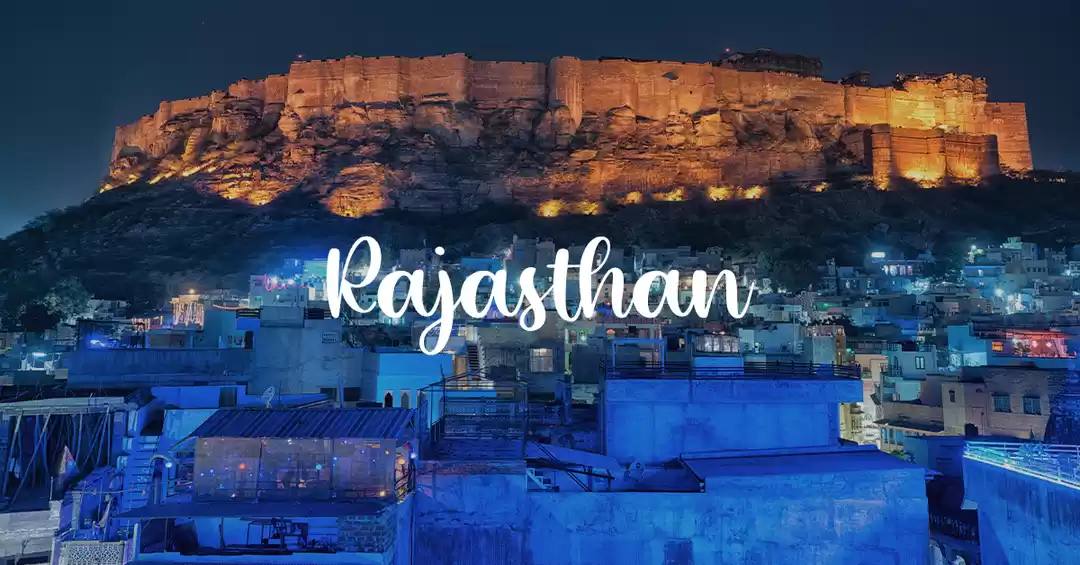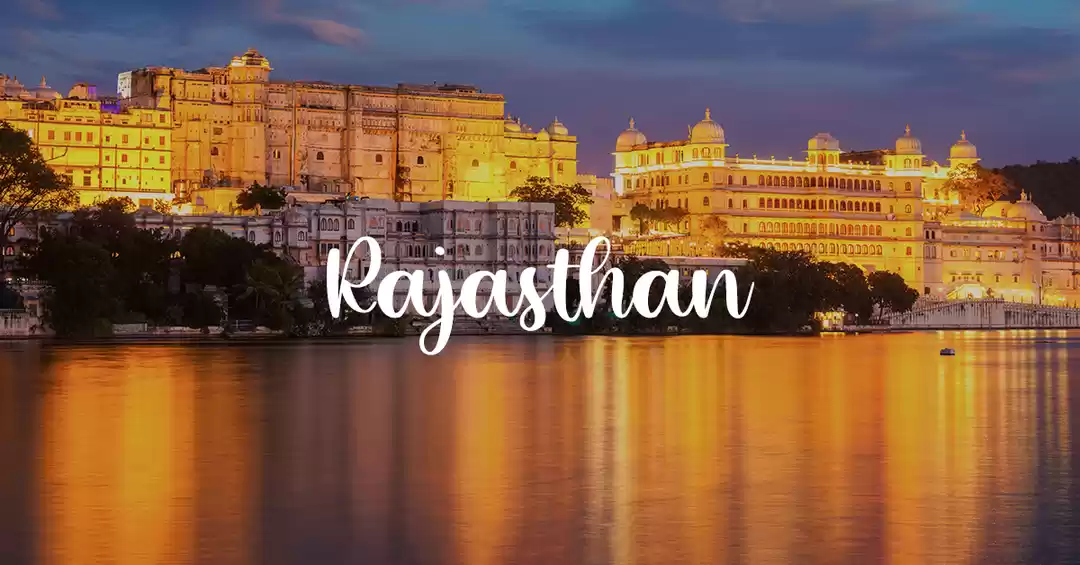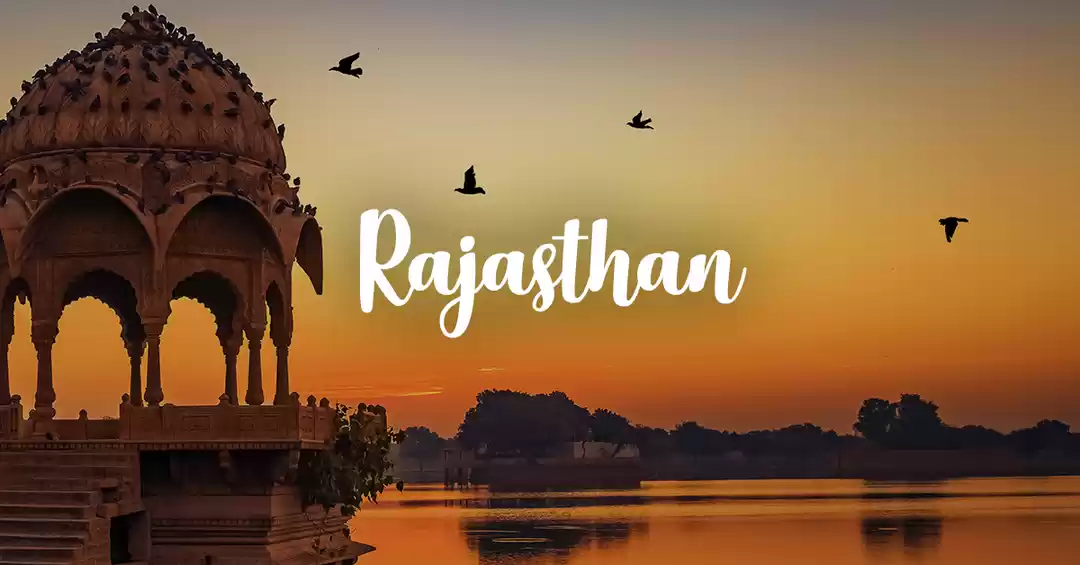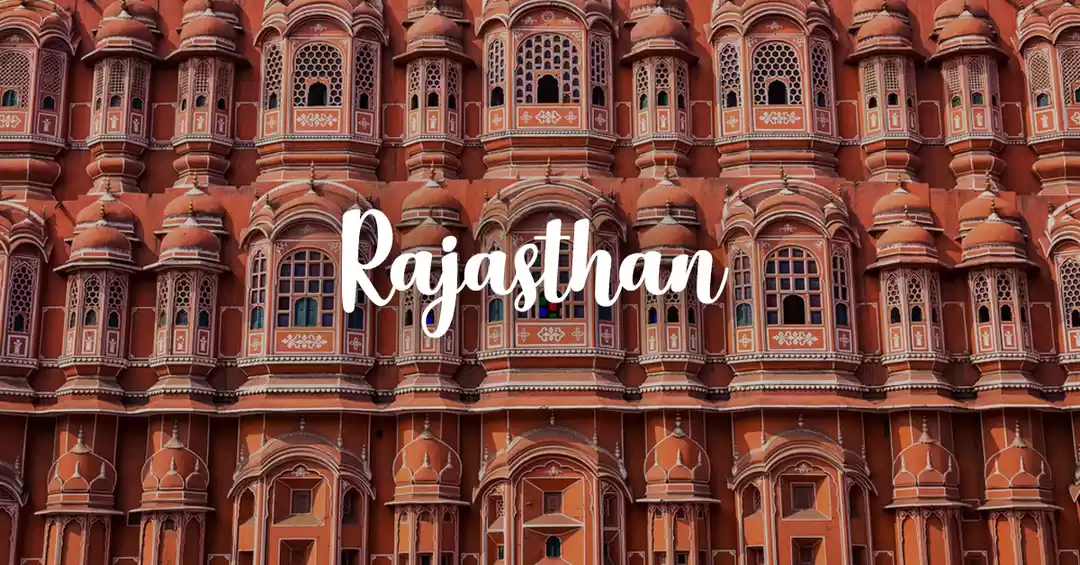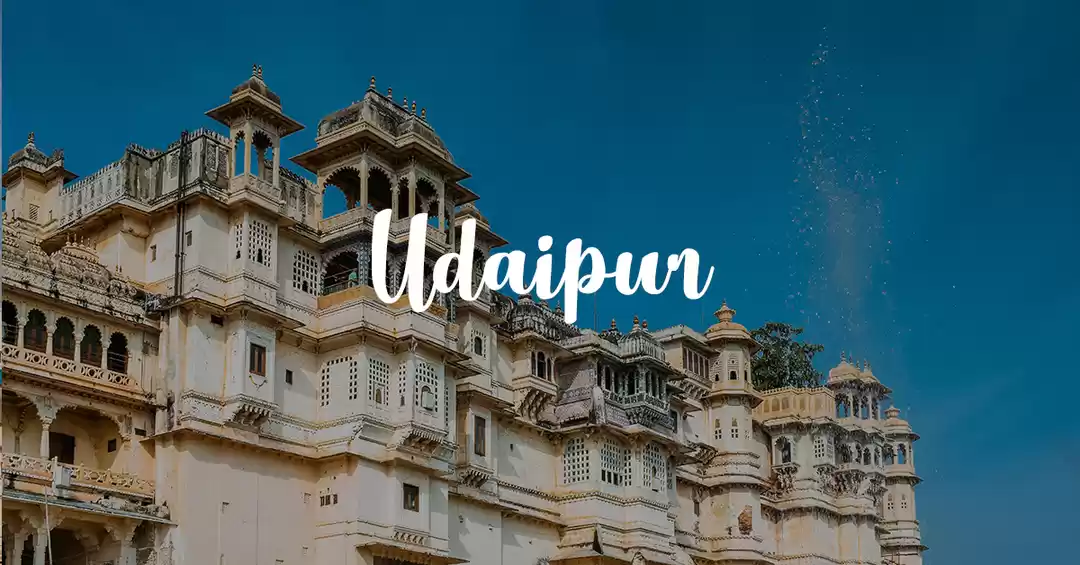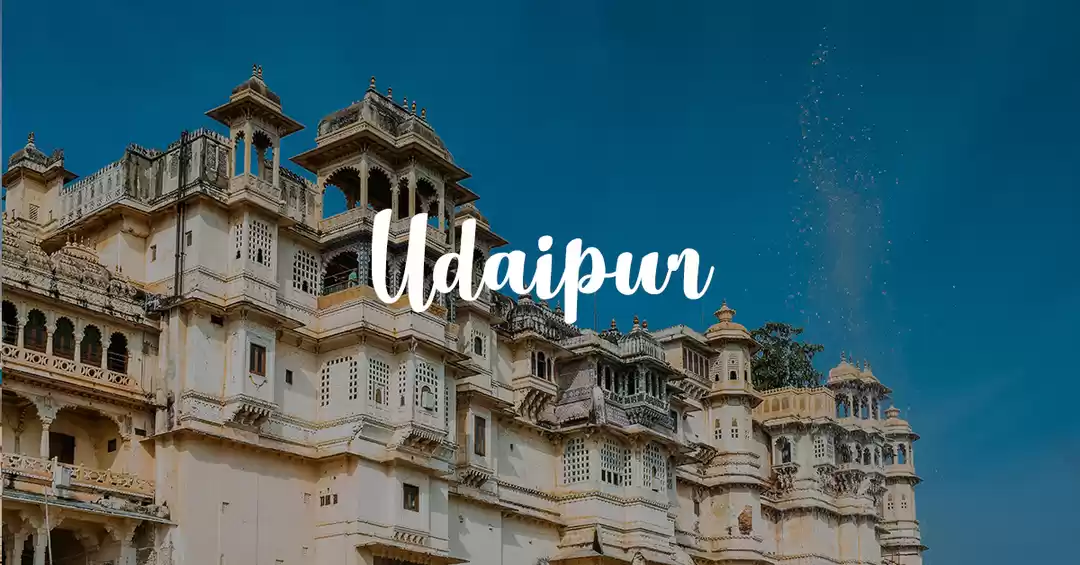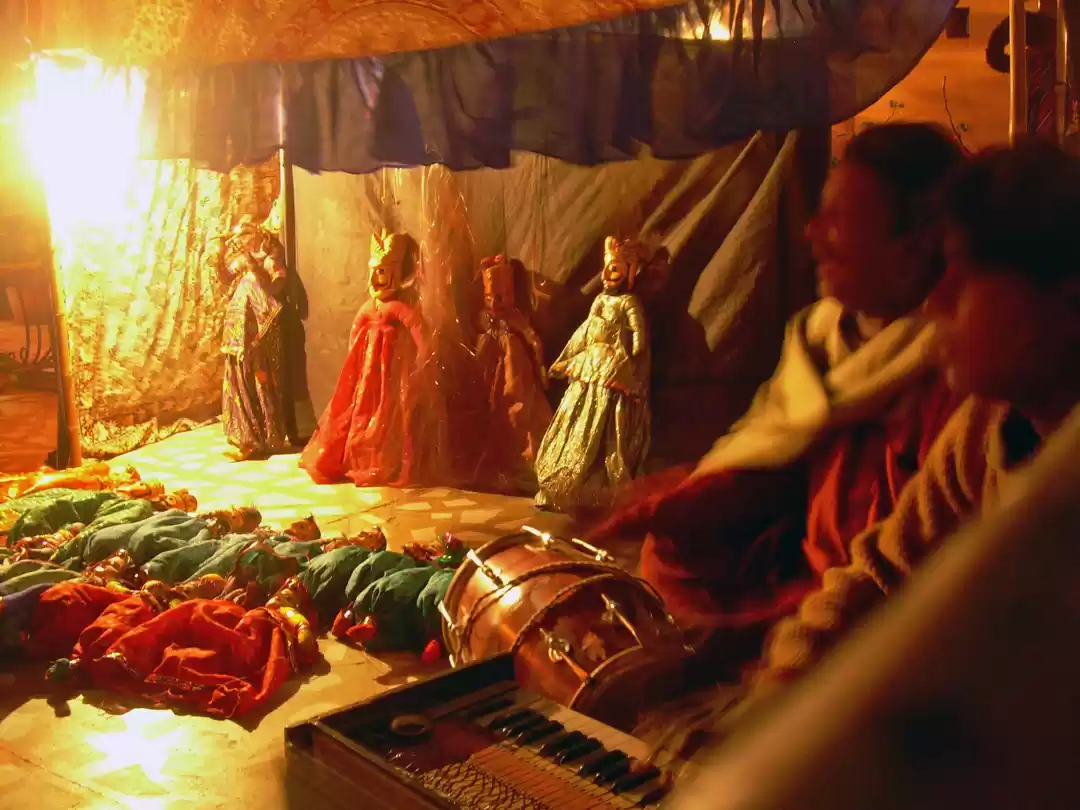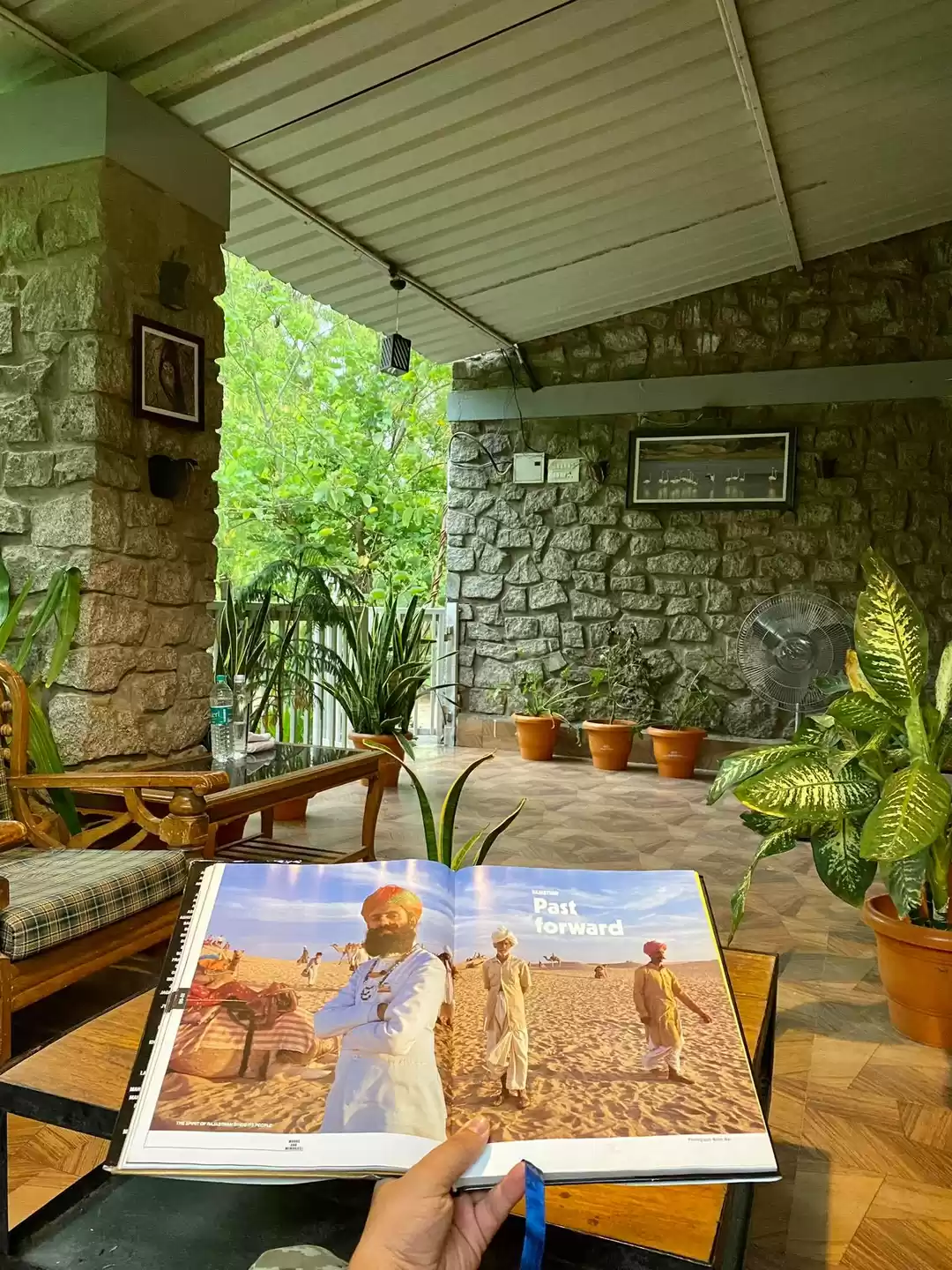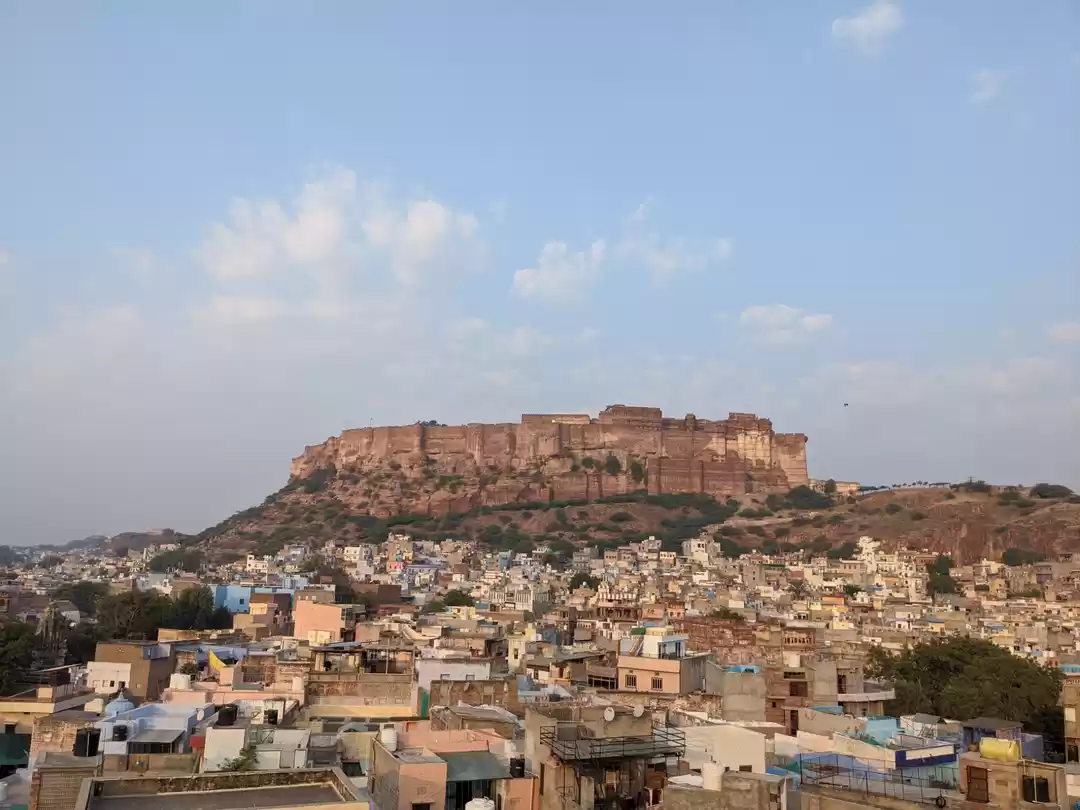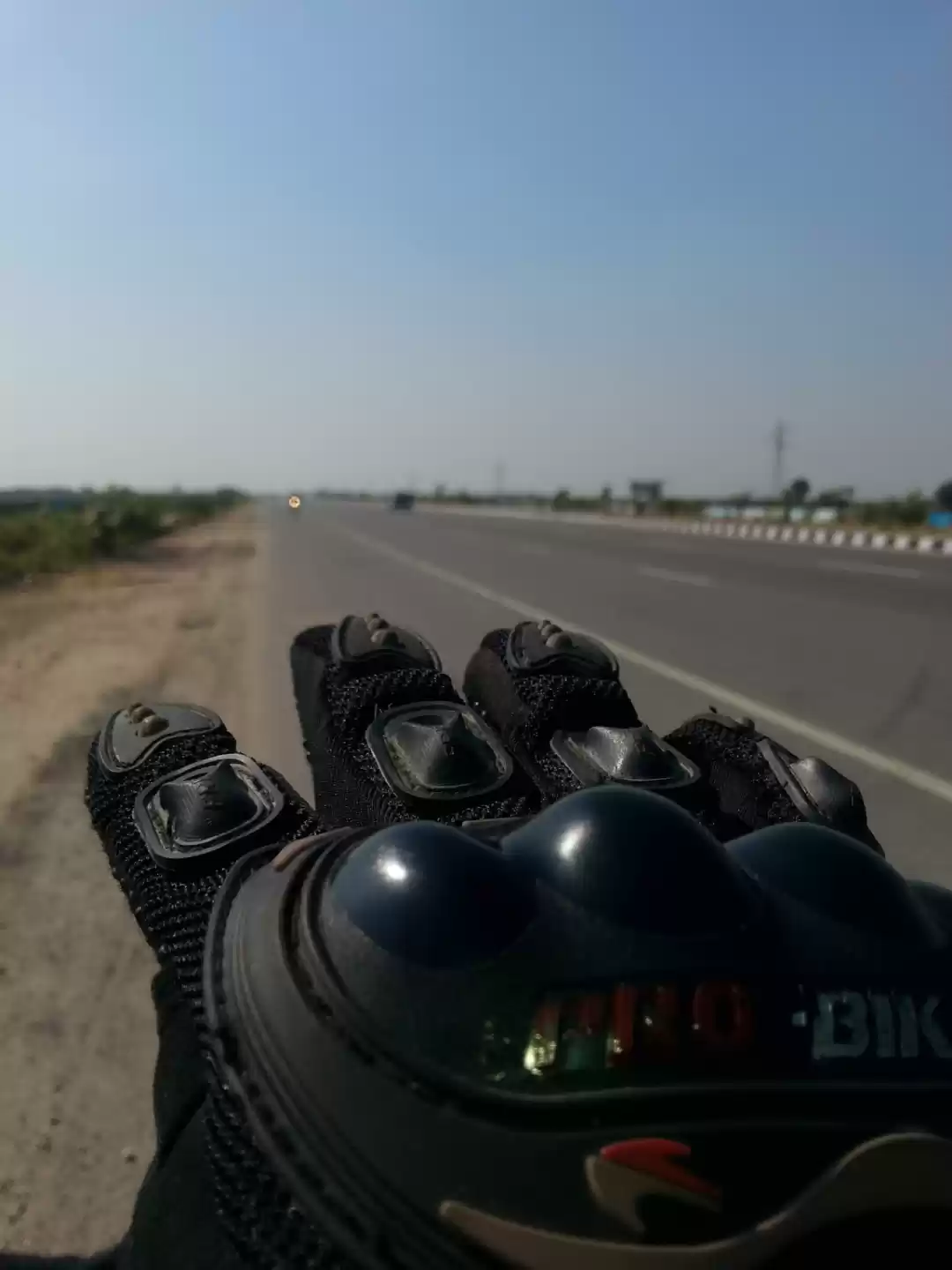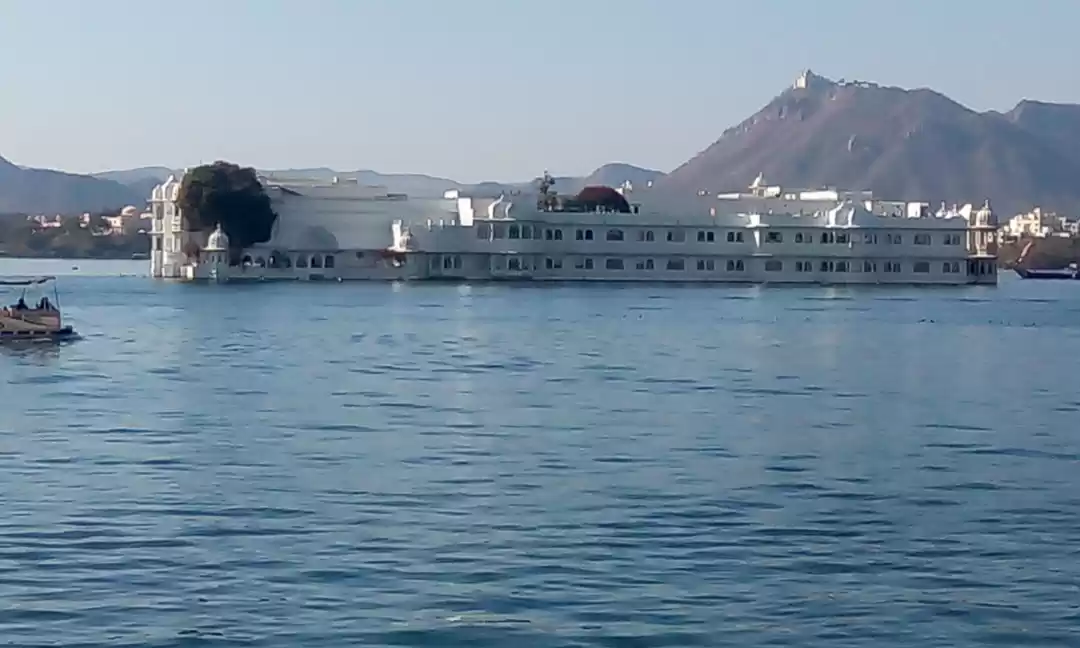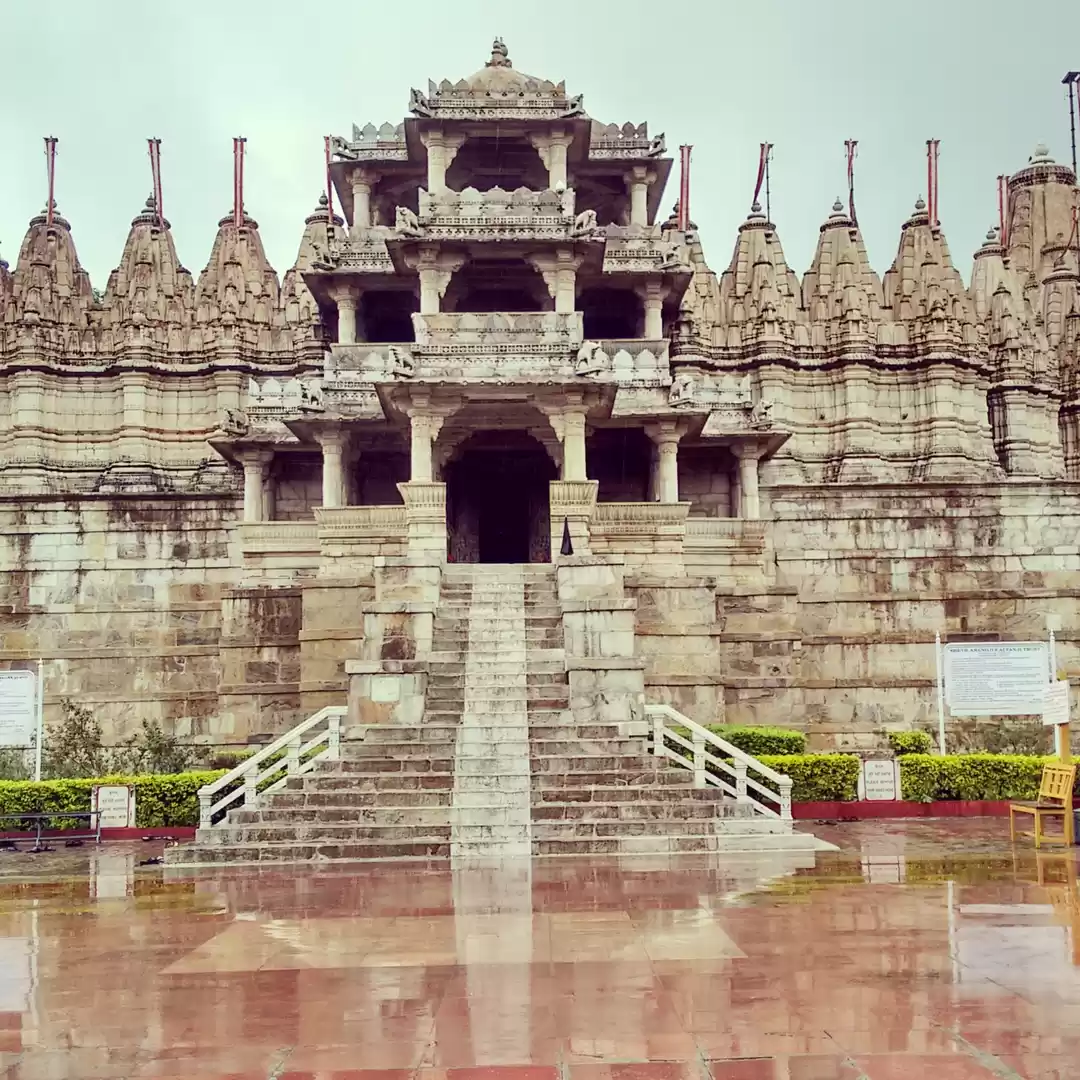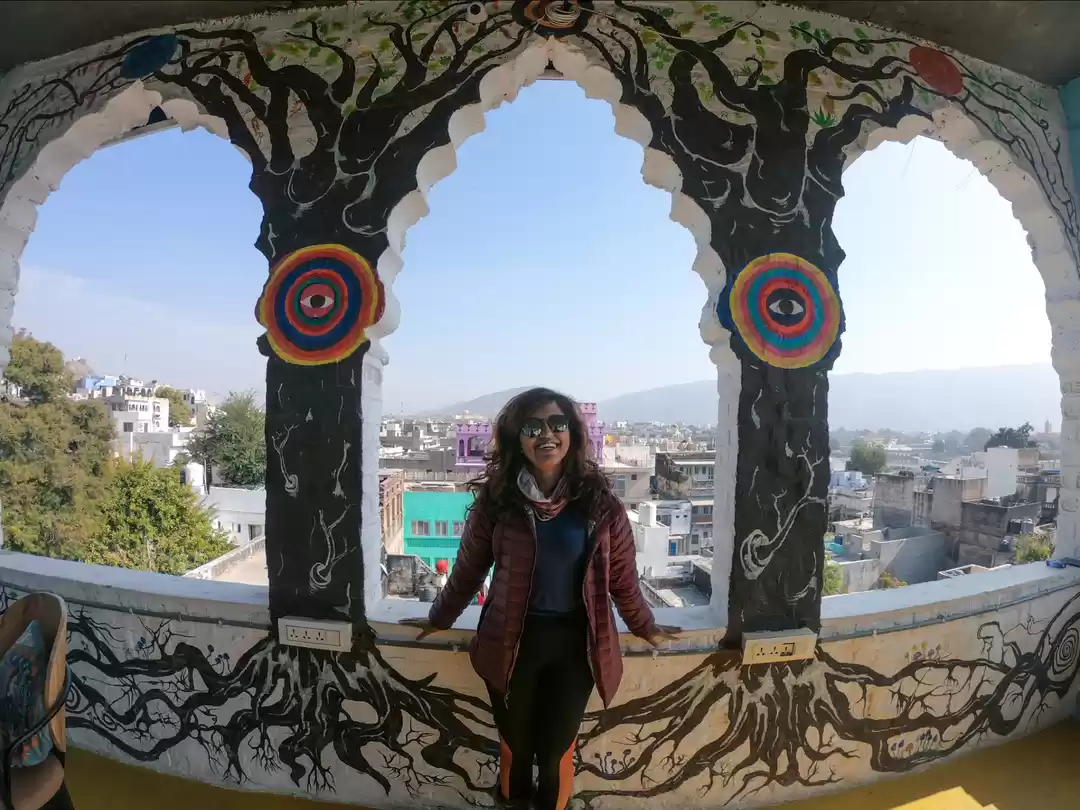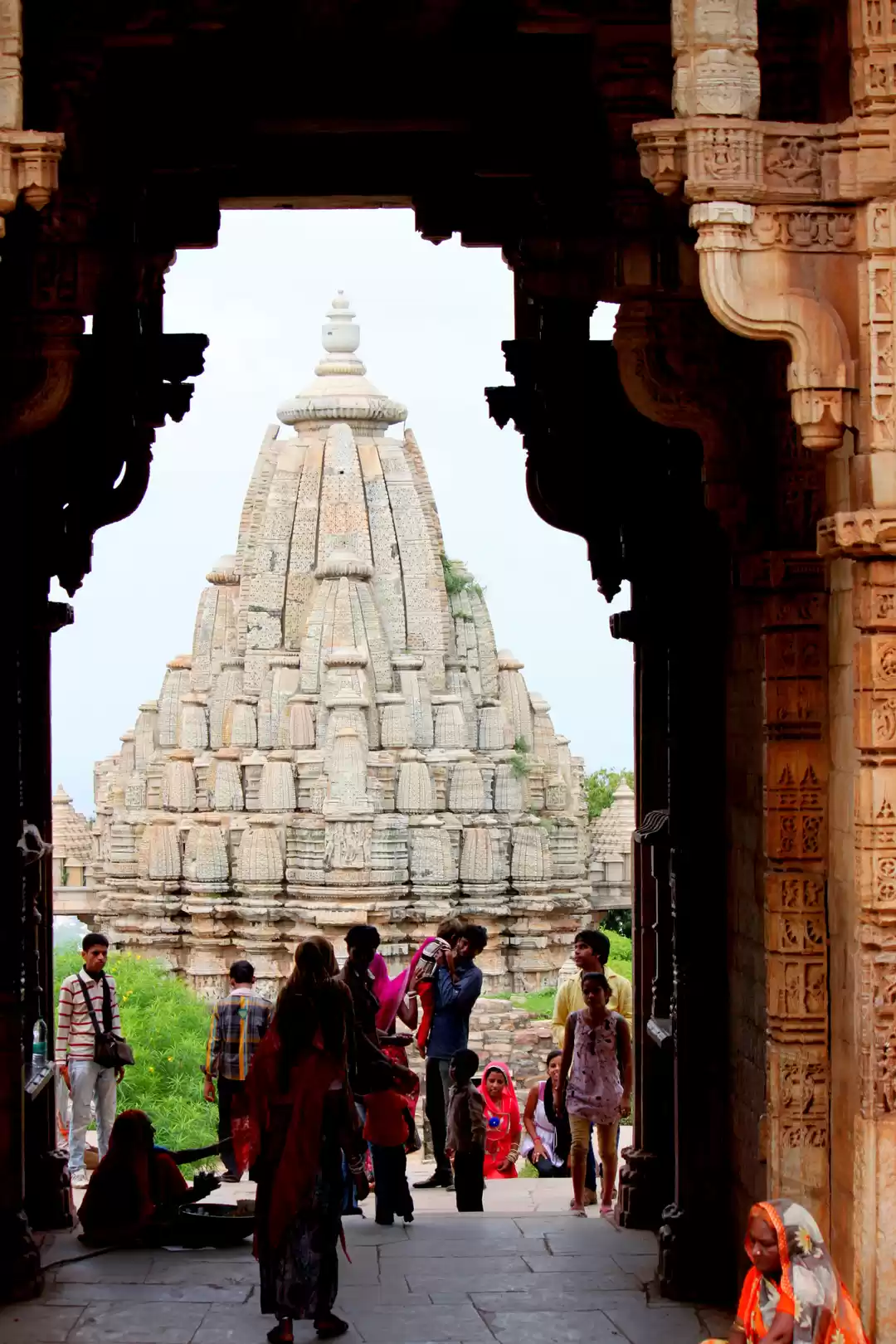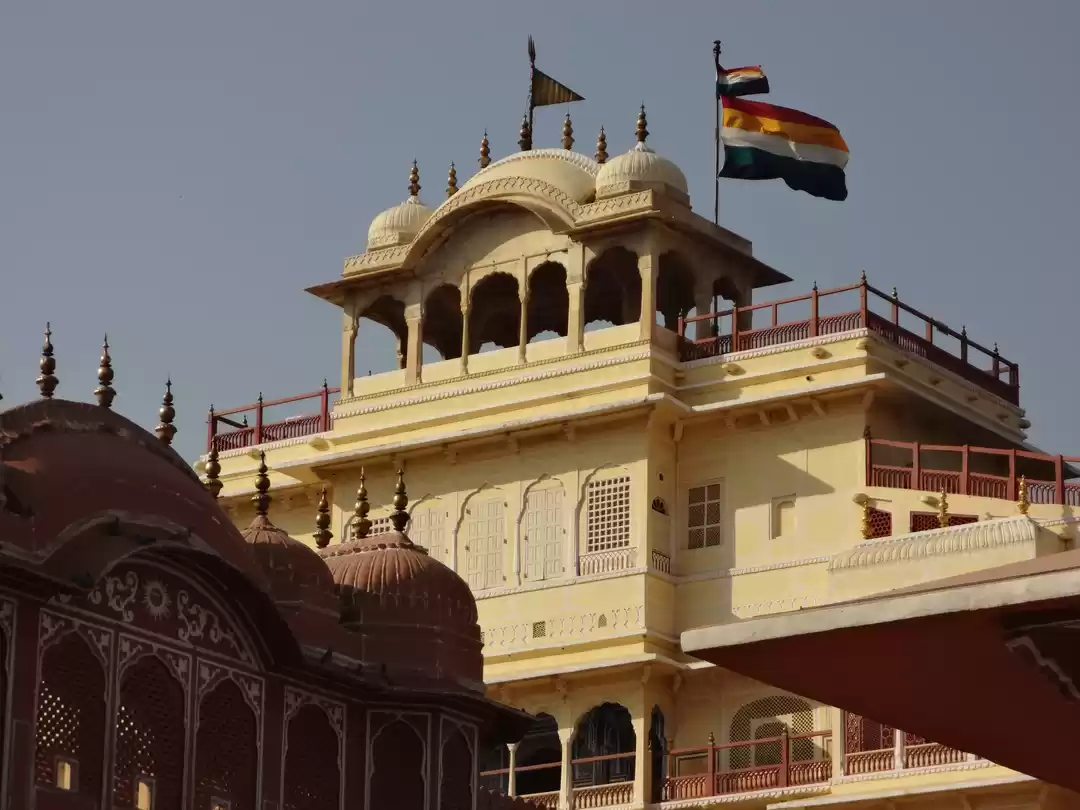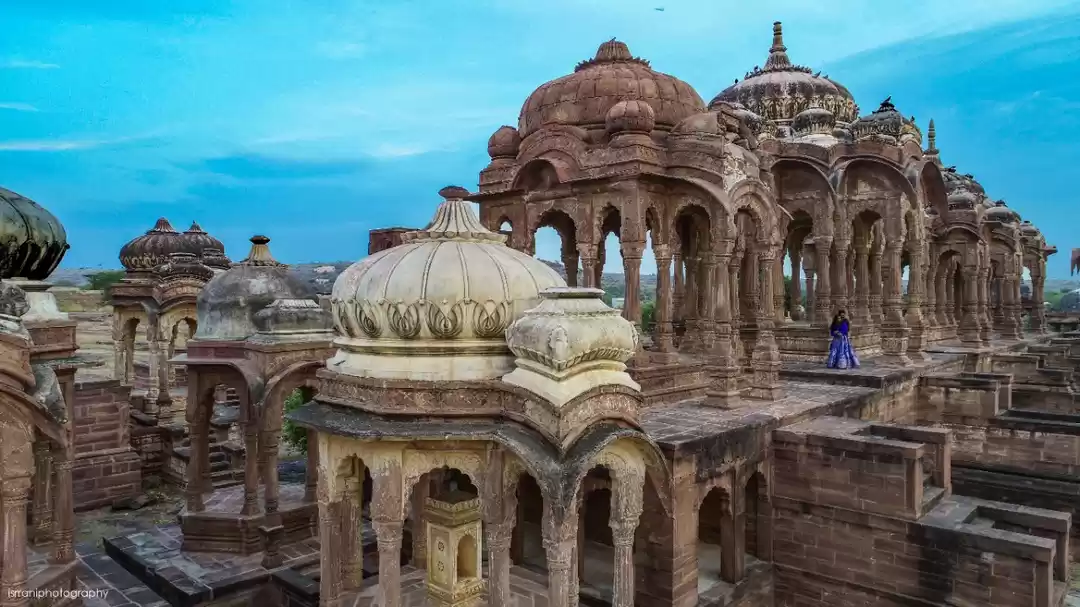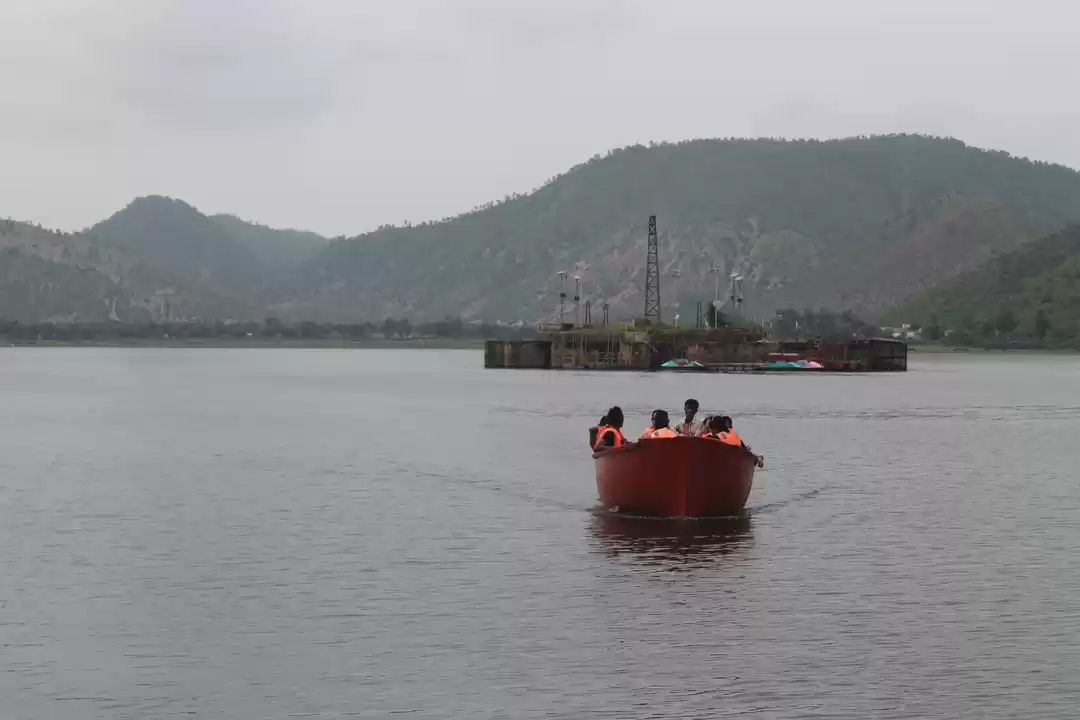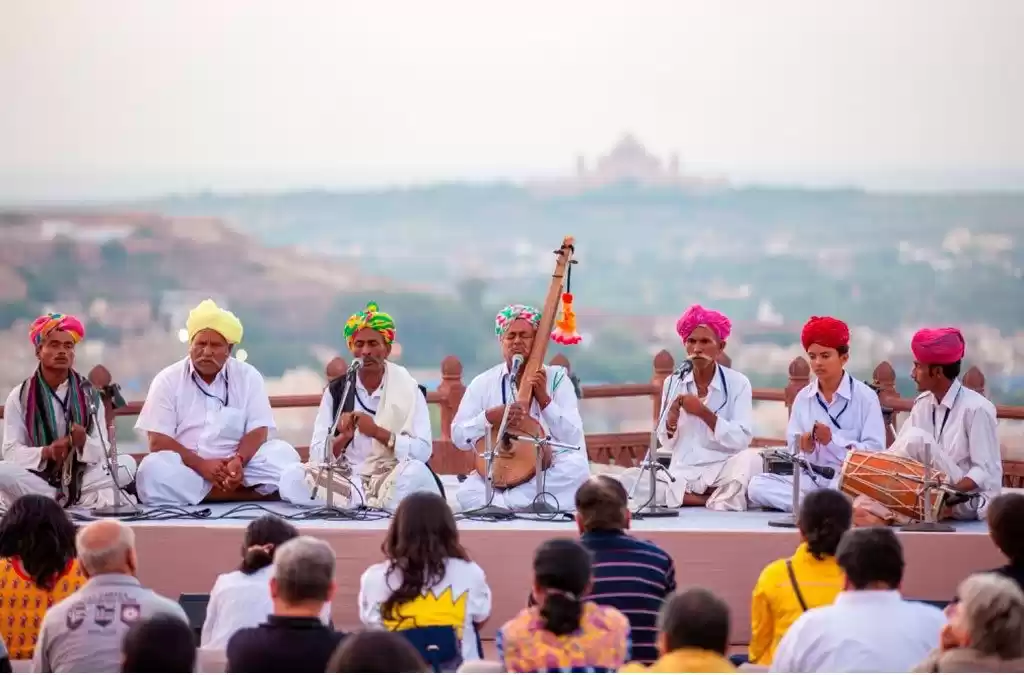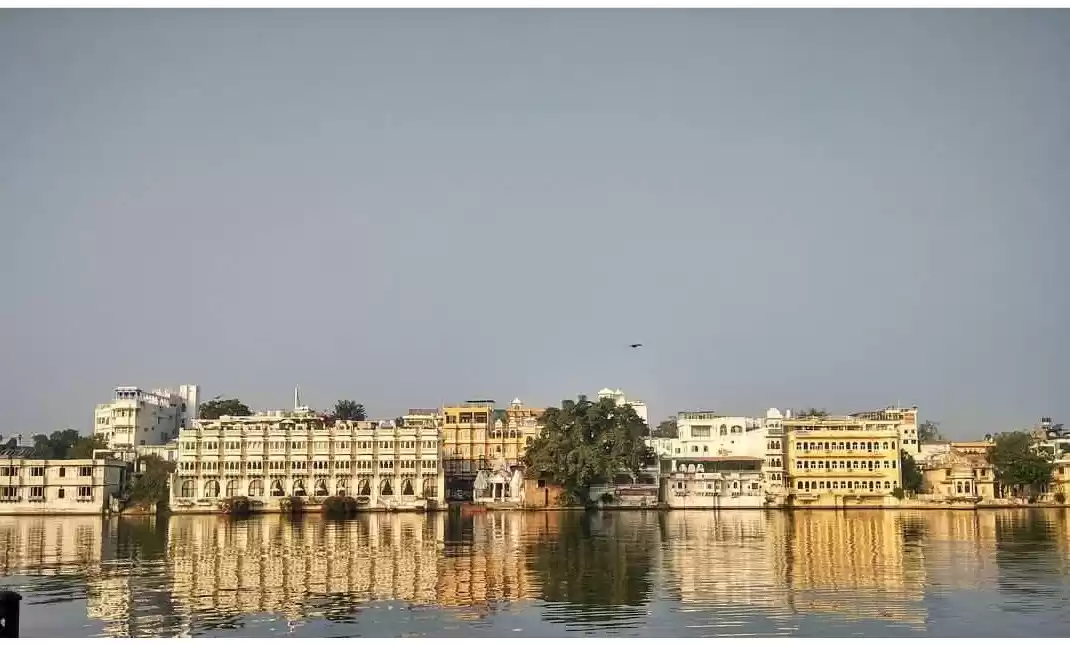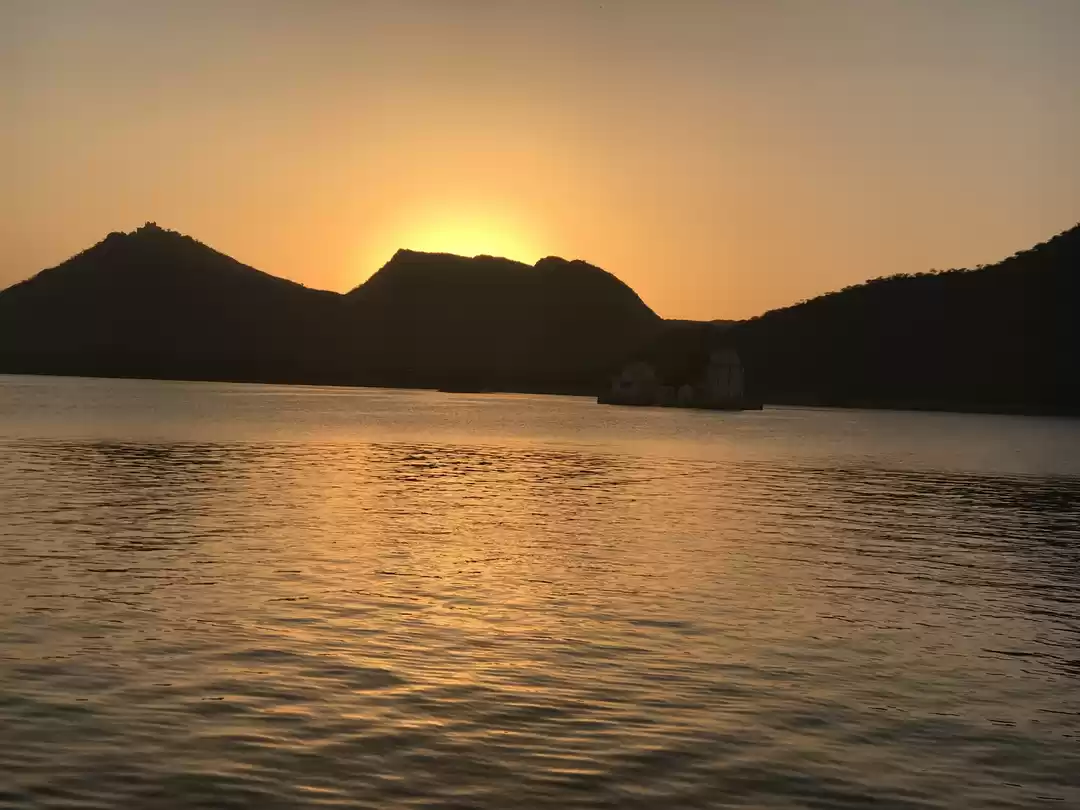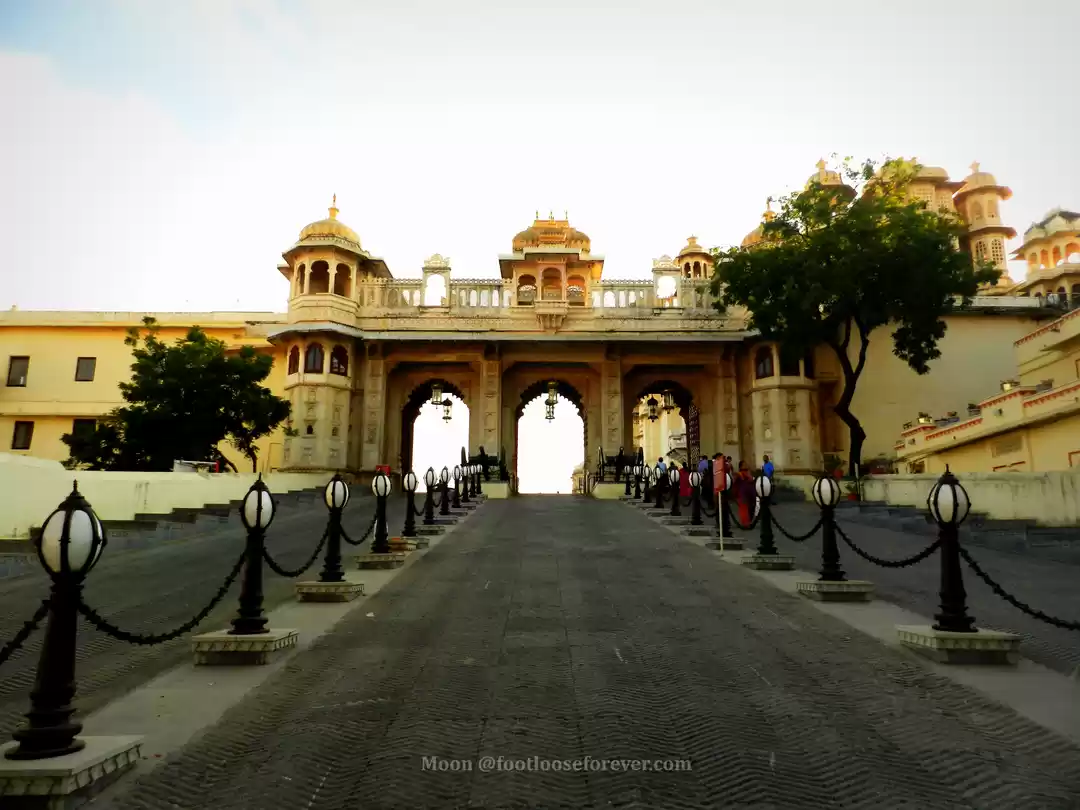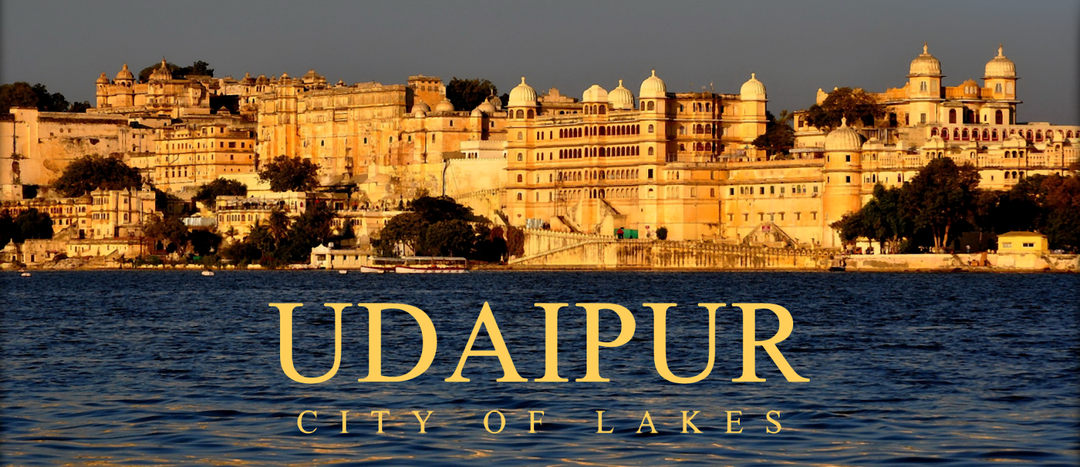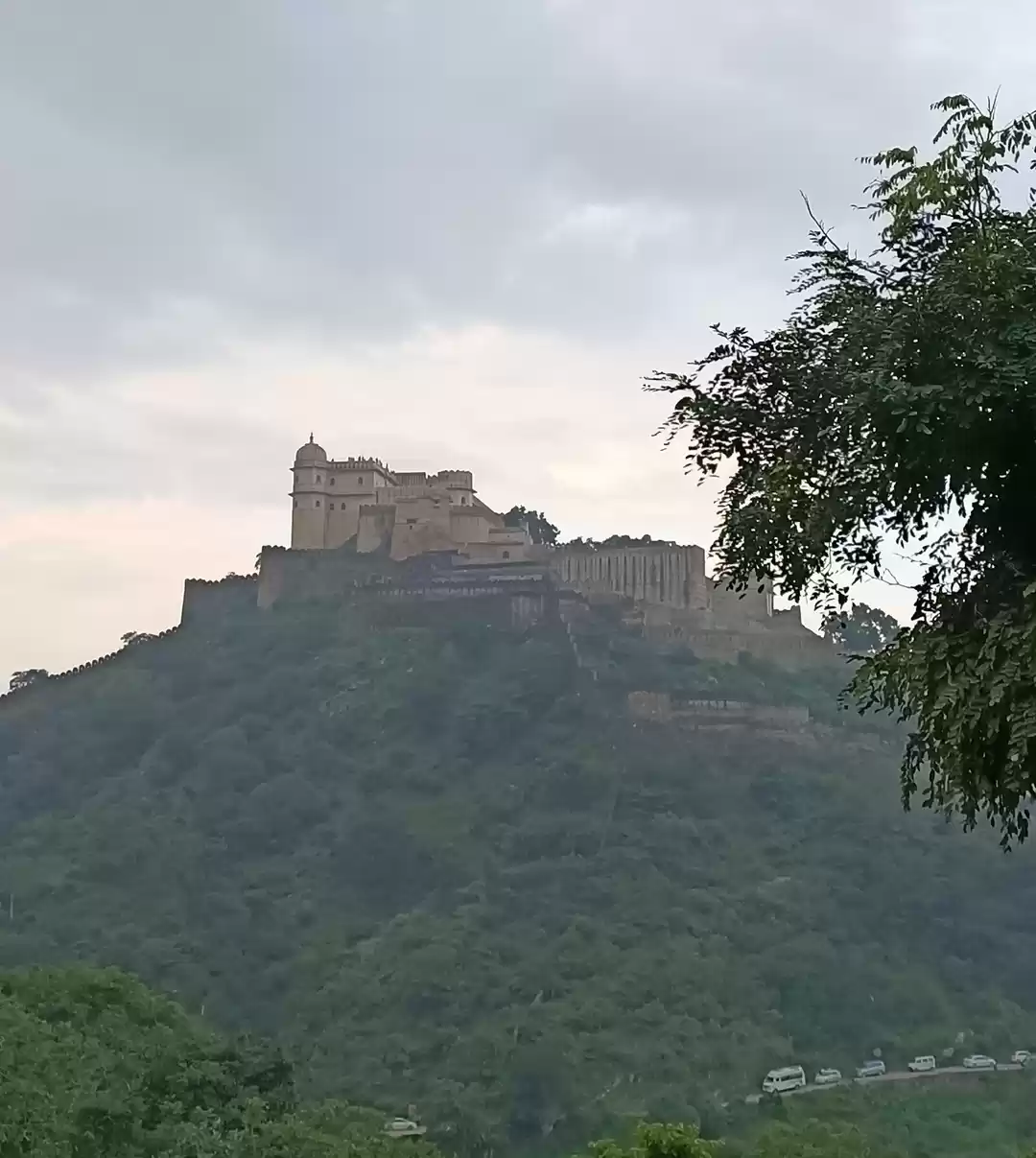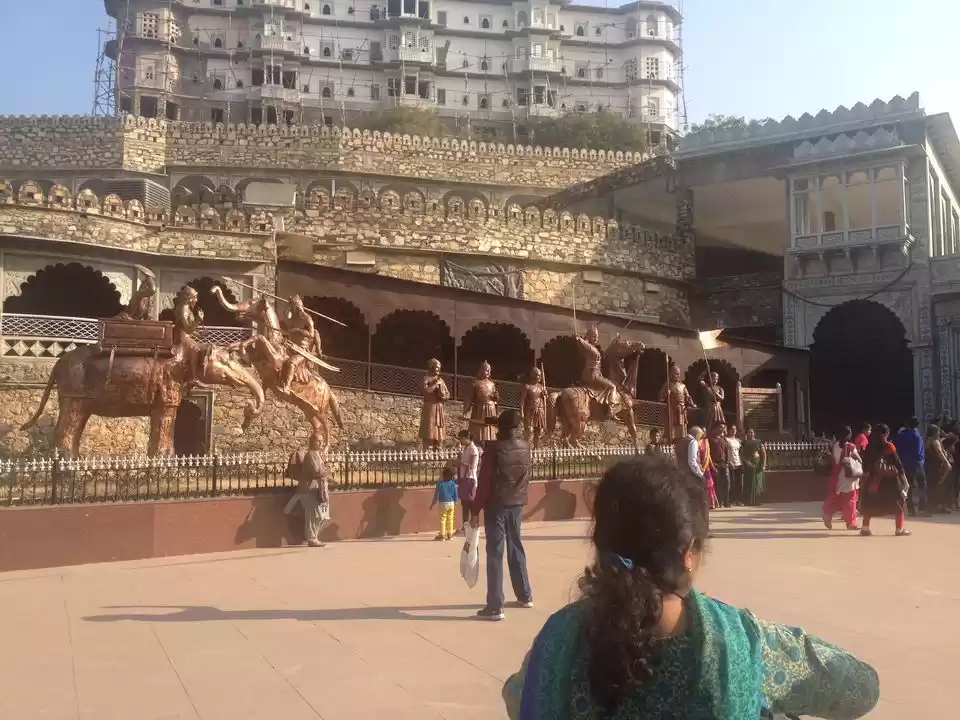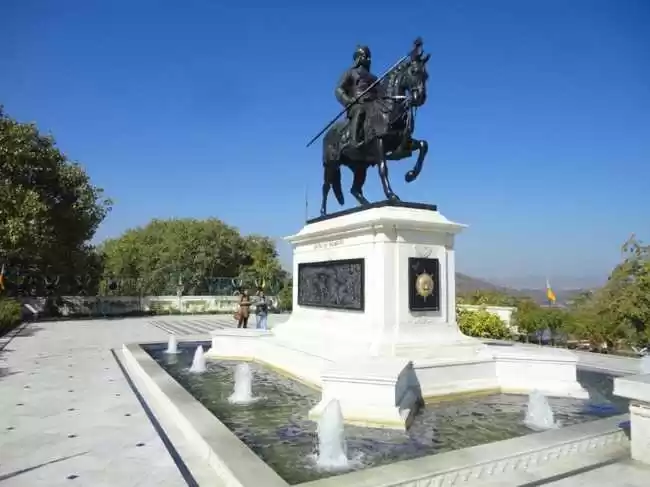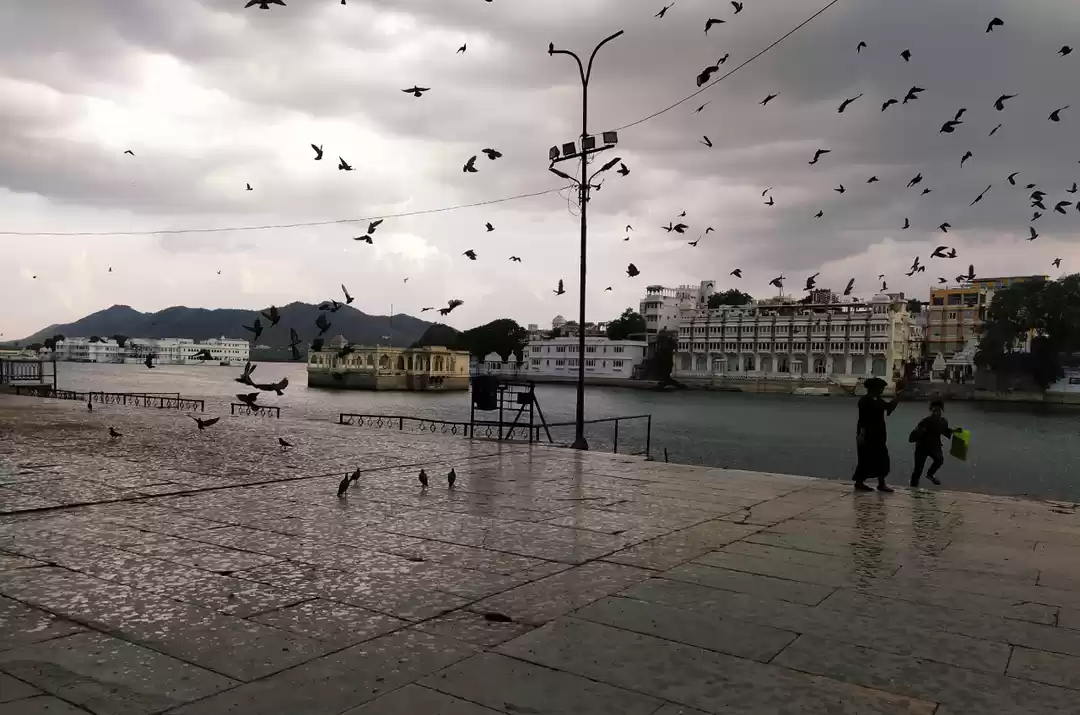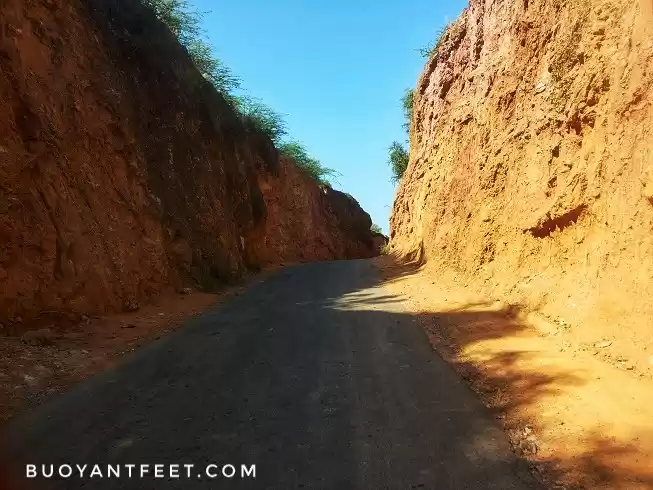




I had the chance to go to
Udaipurlast weekend. It's a beautiful city, erstwhile capital of
MewarKingdom and has been called the "
Veniceof the East" due to its lakeside hotels and forts. Udaipur also has the national honor of being called the City of Lakes and that's how it is popular in the country. Here is a link to my
photo album on Udaipur.
Udaipur is close to 600 km from Pilani and like my last few trips, this trip was also planned just a day before we actually had to travel. Without any train ticket, me and my friends decided to take a direct bus that has sleeper compartments. Rajasthan still doesn't have Volvos running between the big cities, I hope the condition of highways and the quality of public transport gets improved soon. It took us 14 hours to reach Udaipur and I wasn't very happy with the bus but still it's the best thing you can get in the 11th hour.
You should start learning about Udaipur at udaipurtourism.com and you'll get a basic idea of what to expect and see, what to bring back and everything else.
History of Udaipur –While reading about Udaipur's history, I came across the following facts -
- Udaipur was founded in 1559 by Maharana Udai Singh II as the final capital of the erstwhile Mewar kingdom.
- In 1568, the Mughal emperor Akbar captured the fort of Chittor, and Udai Singh II moved the capital to the site of his residence, which became the city of Udaipur.
- Most famous Mewar king is Rana Pratap Singh I, son of Rana Udai Singh II. Rana Pratap would fight the battle of Haldighati against Mughal army and would hold Mewar as a landlocked Hindu kingdom in between the much bigger and powerful Mughal empire. Even his horse - Chetak gets mention for being loyal to his master and saving his life from the battle of haldighati even when his own leg was hurt in the battle.

After hearing so much about Rana Pratap that he was the only Hindu king who put up a fight against the invading muslim rulers and was the bravest man of his times, I wanted to hear his story, so we decided to go to Haldighati on the 2nd day of the trip, the place where the actual battle was fought, there is a museum dedicated to Rana Pratap there. But, to add to our findings, our cab driver told us the not-so-popular version of the story, where according to his views, Rana Pratap came out to be a brother-slayer and a coward, death-fearing dumb ruler who should've been forgotten but got all the praise instead.
Popular version of Rana Pratap's Story -
Though the Mughals had captured Chittor, the capital of Mewar, in 1568, the larger part of the kingdom of Mewar was still held by Maharana Udai Singh. The coronation of his brave and heroic son Rana Pratap Singh (Maharana Pratap) took place on 3rd of March 1572 amidst depressive circumstances. Against such odds as the limited resources, discontented kinmen and the hostile attitude of his brother Shakti Singh, Maharana Pratap decided to stand upto Akbar.
On the other hand, Akbar was also worried about the recalcitrance of Mewar. To subdue the Rajput resurgence at all costs, he dispatched a huge royal army under the command of Prince Man Singh of Amer and Asaf Ali in April 1576. Man Singh started off from Mandal Garh towards Gogonda through Modi Nagar, and encamped facing the Haldighati between the Aravali hills and the Khamnaur village on the south bank of the river Beas.
When Maharana Pratap saw the approaching Mughal army, he assembled his armies on both sides of the narrow pass. The thickly forested hilly route was so narrow that two riders could barely pass through side by side. Maharana selected this strategically located spot to face the Mughal army. As compared with the size of the Mughal army the Maharana's army was a small one. But the Rajputs had courage and a patriotic zeal.
Moving forward from the Haldighati, the Rana launched a direct attack on the Mughal troops. The attack was so vehement that it made short work of the left and front side phalances of the Mughal army while the middle and the right side phalances were in disarray. The Rana did not had any additional troops to take advantage of the initial successes. Hence to bring about the quick defeat of the Mughal army Rana launched an attack with elephants.
All of a sudden a rumour spread that Mughal emperor Akbar was himself coming to the rescue of Man Singh. This instilled a sense of courage within the Mughal troops they surrounded the Maharana's army, at that time it seemed that Maharana himself would get killed. At this moment, the Naik of Jhala took the crown off the head of the Maharana and put it on his own so as to impersonate Maharana Pratap. The enemy mistook him as the Rana and killed him off.
Seizing an opportunity, the Rana took aim with his spear on Man Singh who was riding an elephant. The aim, however, missed and the spear pierced the body of the Mahout instead. Finding their General in danger the Mughal army encircled Rana.
The favourite horse of Rana 'Chetak' took his master out of the battlefield, but as it had sustained injuries it fell on the ground and died but not before rescuing his master. The loss of Chetak left Maharana a broken hearted man. Ultimately Man Singh won that day for the Mughals and Gogonda now passed on under the Mughal occupation.
The turning point again came in 1582 when Rana Pratap defeated the Mughal army in Dewair( the northern entry point of Mewar connecting Marwar, Gujarat, Malwa and Ajmer). From this battle onwards Rana Pratap moved from being defensive to offensive and in a very short time he regained all the lost land of Mewar except Ajmer and Chittor which he could not conquer till his demise
But let's start with a tour of Udaipur - Places to visit at Udaipur -
We got a room in the Gulab Bagh area of the city, the hotel was good and staff there helped us in booking a cab for touring the city. We spent some time at the Fateh Sagar Lake and Maharana Pratap memorial. Fateh Sagar is one of the major lakes of the city, a big park - Nehru Vatika is present on an island in the lake. Boating in the lake was a pleasant experience considering the heat. In 1687, Maharana Jai Singh first constructed the lake but two hundred years later the earthen bund which formed the lake was washed away during floods, and thereafter Maharana Fatah Singh, the ruler of former Mewar State, reconstructed it in 1888. The memorial on the other hand was just a statue on the top of a hill and there wasn't much that we could there.

After this, we headed to Saheliyon ki Bari, which basically is a garden and courtyard for the royal maidens. It was built by Maharana Bhopal Singh as a recreational space for the 48 maidens that had accompanied his wife after their marriage. When it was built, it had just the garden but the fountains were added about 125 years ago and worked without any motor, they just use natural pressure of the fountain due to its shape and the water comes from Fateh Sagar lake. We were tired by the summer heat now and headed for lunch after this. We wanted to keep things simple and light since we traveling a lot, so we just opted for some regular Indian fast food at Babu Bazaar.

After lunch it was time for City Palace and Lake Pichola. We were lucky to have experienced sunset by the lake side and it was magical! The fort is so grand that you can't just capture its beauty in a picture, you have to be there to understand its grandeur scale and its importance for the Mewar kings. There are various 5 star hotels in the lake's vicinity and 2 of them, the most famous ones are built on islands in the lake. They usually are in the news for being the venue for some celebrity getting married.


Gangaur is all about honoring the goddess Gauri. A manifestation of Parvati (Lord Shiva's wife), she represents purity and austerity. Gangaur signifies Lord Shiva and Parvati together. It's believed that Parvati returned to her parental home during Gangaur, to bless her friends with marital bliss. On the last day, Parvati was given a grand farewell by her loved ones and Lord Shiva arrived to escort her home. We had planned the trip in sync with the festival dates and it was worth the travel and wait. The festival started with a procession of the local deities and sculptures of goddesses. The procession advanced to the Gangaur Ghat of lake Pichola and a stage was setup at the ghat for cultural dance and music events.



It is said that all newly married women must fast for the whole 18 days of the festival. Even unmarried women fast and only eat one meal a day, in the hope of finding a good husband. Gangaur is also an auspicious time of year to select a life partner. Tribal men and women get the opportunity to meet and interact, pick there partners, and elope and marry.


Make sure you plan your next Udaipur trip according to the dates of this festival so that you're able to attend this unique event. Many folks from different corners of the world are part of this event along with the local men and women. Although the festival is celebrated all over Rajasthan, but especially in Udaipur it is celebrated specially for three consecutive days known as hari gangaur, chundari gangaur and gulabi gangaur.


I felt a pleasant relief when I heard that nightlife in Udaipur isn't dull like other Rajasthani cities. While having our dinner at a rooftop restaurant near the Gangaur Ghat, a local lady who was having dinner at the table next to ours, suggested us to hang around the Fatehsagar Lake after dinner. So we did... and the cafés there are really good. You must try the kulhad coffee which is nothing but coffee served in an earthen pot, it has a distinctive taste to it which I'm sure you'll like after a day spent in walking around the city. We walked down the road besides the lake and it was really good to see people hanging around with their friends and family. One thing I could notice and still remember is that the region is very liberal and open-minded as I could see muslim women strolling in gardens by the lakeside along with their husbands, some with their customary veils and some without it, this sight isn't a regular feature of nightlife in Indian cities atleast at 10 pm. Udaipur seemed to have struck a perfect chord with tradition and contemporary worlds.


So, after spending the day touring the city, evening spent at the Gangaur Ghat and strolling on a road by the lake Fateh Sagar after dinner.. I was pretty happy with Udaipur as a tourist destination and as a landmark in Indian history. We headed to our hotel at 11 pm so that we could get enough sleep for the next day's adventures.
Side trip on day 2 -After covering most of Udaipur on our first day, we had two choices - we could have covered Sajjangarh and other places in Udaipur such as museums or we could for a side trip to Haldi Ghati, Ekling Ji temple and Nathdwara temple. We decided to go for the trip since my friends wanted to visit the famous temples and I was interested in history of Rana Pratap. It took us 5 hours to cover all the 3 places as they are a little away from the main city.
The Ekling Ji temple complex is said to be 1200 years old and Eklingji is believed to be the ruling deity of Mewar Princely State and the Ruler Maharana rules as his Dewan. The site has a complex of stone temples and is maintained very well. I wasn't allowed to click the building but here is a shot of the place from Google. Begun in 971, the temple complex was built by the Guhila (later called Sesodia) dynasty of Mewar, in honor of their presiding deity Eklingji, a form of Lord Shiva. The beautifully sculpted temple complex includes 108 temples within its high walls. The main temple, which dates to the 15th century, was rebuilt from the ruins of an earlier destroyed temple.

After covering the Ekling Ji temple, we headed for the Nathdwara temples and boy, it was a crowded place! The place is famous for its temple of Krishna which houses the idol of Shrinathji, a 14th century, 7-year old "infant" incarnation of Krishna. The idol was originally worshipped at Mathura and was shifted in the 1672 from Govardhan hill, near Mathura along holy river Yamuna after being retained at Agra for almost six months, in order to protect it from anti-Hindu fanatic iconoclastic Islamic policies of Mughal ruler Aurangzeb. In the anarchical environment of late 18th and early 19th Century, the temple of Shrinathi was attacked by the Holkars of Indore, the Medas and the Pindaris. Accordingly, the idol was shifted again and was protected at Udaipur and Ghasiyar under the patronage of Maharana Bheem Singh of Mewar. We were lucky enough to reach on time and we got a glimpse of Shrinathji.

After taking blessings that should now shield us for year long! we headed to Haldi Ghati (evidently I don't like much about temples except their architecture and history). Haldi Ghati is the same battlefield which made Rana Pratap a hero. Our cab driver spoke in lengths about the alternate version of the Rana Pratap story. We didn't have much to argue with as none of us had dived deep into history books to counter or support the guy but it definitely stirred my mind to start reading more about history of this place. Mewar and Maratha rulers were expected to present the next ruling class after decline of Mughals but they couldn't live upto the expectations. A lot many things happened in 17th - 18th century India that shifted the balance in favor of Britishers.
Alternate Version of Rana Pratap's Story (as per our cab driver) -Our cab driver, who seemed to had a distinct taste of history told us a different story. He compared Rana Pratap with Aurangzeb who had his brothers killed to be on the throne. Rana Pratap somehow was able to get Shakti Singh, his brother and the prince chosen to be the king by their father Rana Udai Singh, out of the kingdom at the time of Raj Tilak - the coronation.
Shakti Singh, left helpless, joined the Mughal army at Delhi and was plotting to take back what ideally belonged to him. Prince Man Singh, prince of Amer region, north of Mewar, whose sister Jodha Bai was married to Mughal King Akhbar, was once returning from a victory in Malwa region, south-east to Mewar; Rana Pratap organised a feast for the Mughal army and his friend Man Singh but then didn't turn for the event citing that he won't eat with a man working as a slave to a Turkish invader. Enraged by this insult, Man Singh wanted to teach Pratap a lesson. Shakti Singh met him at the Mughal army camps and the two princes attacked Mewar.
Akhbar refused to fight in this battle and wanted Man singh to settle the matters quietly but still the Mughal army under Man Singh and Shakti Singh was much bigger than what Rana Pratap had. Rana Pratap faced immediate losses and within a couple of hours, most of his cavalry was lost and he had to run away from the battlefield to save his life. Shakti Singh caught him but then helped him to get away as he couldn't murder his own brother. Only a coward king would let a soldier take his crown from his head and let the soldier impersonate as the king so that he can run away to save his own life. Such was Rana Pratap and all these incidents were morphed into victory songs.
Post this battle, Rana Pratap spent his entire life in jungles and tents trying to get back his kingdom but wouldn't achieve much and die early at the age of 57 in these jungles at Aravali foothills in 1597. Although he maybe the symbol of courage and will, according to our cab driver, he was a death-fearing coward who spent his life running to protect a kingdom to which he wasn't entitled.
You can read more about this part of history, here is an article on what happened between Mughals and Ranas of Mewar after Akhbar and Rana Pratap. Naturally their sons kept fighting the same battles until Mewar had lost it's vigor and will to extend its boundaries.
End of the trip -We came back to Udaipur at 3 pm and had our bus at 5 pm. We had lunch at Celebration Mall, the largest mall in the city and after all the journeying into history, having burgers for lunch seemed very relaxing. Udaipur is a must visit for anyone coming to Rajasthan. the city would leave you enchanted and you'd definitely get a liking for Rajasthani culture after spending a day here. It was a brilliant trip, the schedule was just perfect, we enjoyed a lot, saw most of the places to be seen, didn't waste a lot of time in sleeping or traveling and yet weren't tired to the extreme limit. We had started off from Pilani at 6 pm and came back at 7 am on Monday morning, so it was a prefect execution of plans and perfect utilization of the weekend.
I leave you with this panorama of the city -

Frequent Searches Leading To This Page:-
best tour packages in rajasthan, rajasthan family tour packages, rajasthan travel packages, rajasthan tour, rajasthan trip packages, udaipur tourism, udaipur travel packages, rajasthan tour package for family, honeymoon packages in rajasthan

